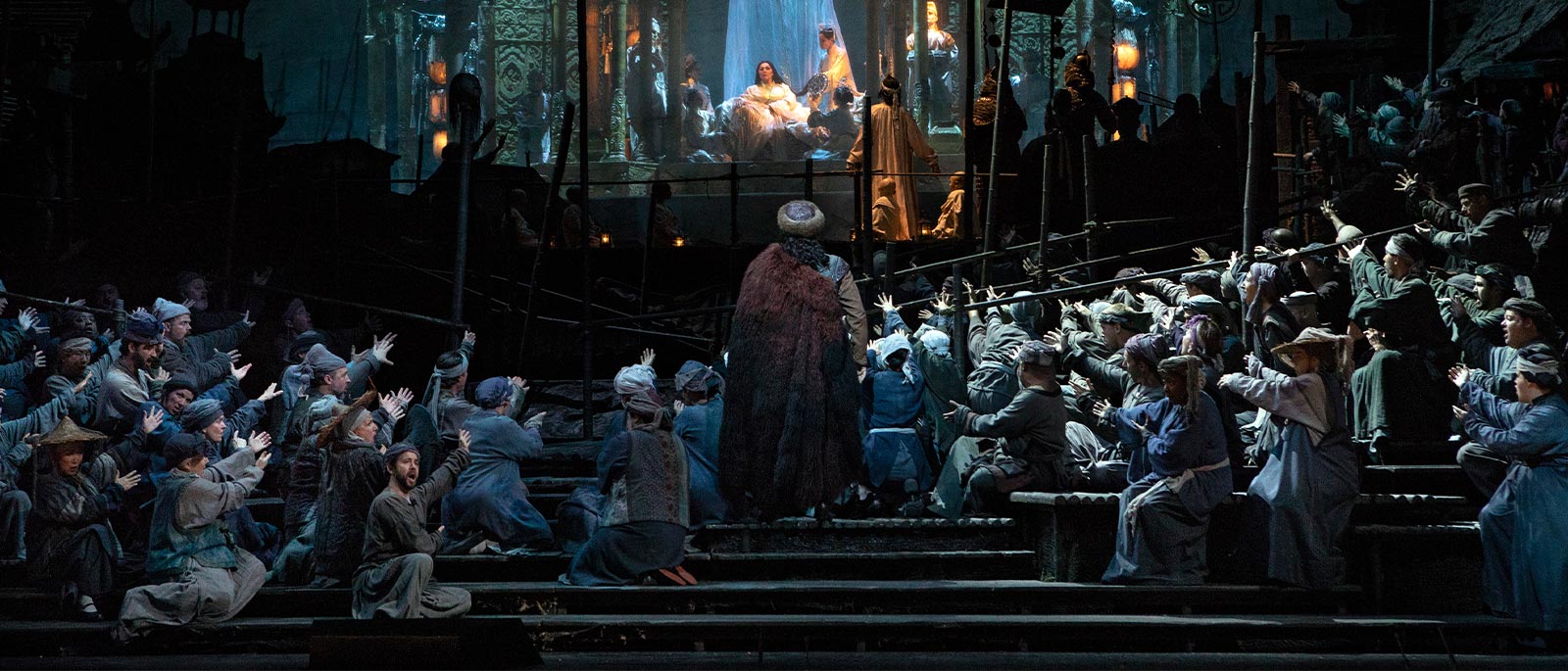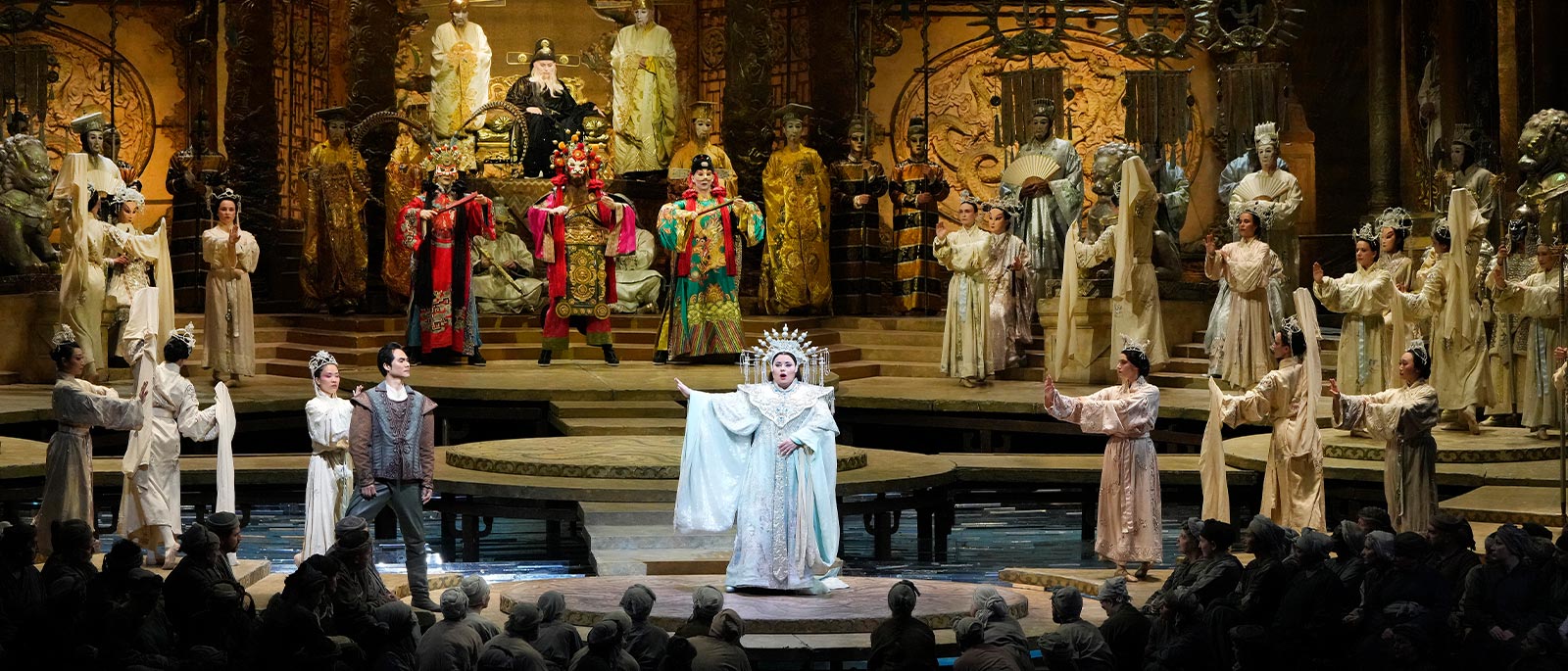
Giacomo Puccini
Turandot
LIVE IN HD
Overview
Ukrainian soprano Liudmyla Monastyrska stars in the title role of the legendary cold-hearted princess—seen live in cinemas on May 7. Tenor Yonghoon Lee is the bold prince determined to win Turandot’s love, alongside soprano Ermonela Jaho as the devoted servant Liù legendary bass Ferruccio Furlanetto as the blind king Timur. Marco Armiliato conducts Puccini’s stirring score. This live cinema transmission is part of the Met’s award-winning Live in HD series, bringing opera to movie theaters across the globe.
Buy tickets for Turandot live in the opera house here.
Languages
Languages sung in Turandot
Sung In
Italian
Titles
Title languages displayed for Turandot
Met Titles In
- English
- German
- Spanish
- Italian
Timeline
Timeline for the show, Turandot
Estimated Run Time
3 hrs 15 mins
-
House Opens
-
Act I
35 mins
-
Intermission
40 mins
-
Act II
45 mins
-
Intermission
30 mins
-
Act III
45 mins
-
Opera Ends
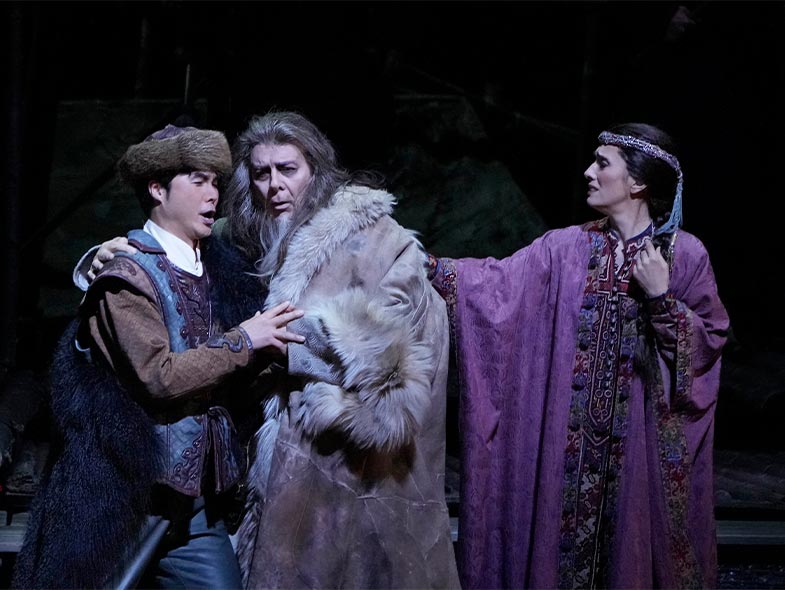
World premiere: Teatro alla Scala, Milan, 1926. Puccini’s final opera is an epic fairy tale set in a China of legend, loosely based on a play by 18th-century Italian dramatist Carlo Gozzi. Featuring a most unusual score with an astounding and innovative use of chorus and orchestra, it is still recognizably Puccini, bursting with instantly appealing melody. The unenviable task of completing the opera’s final scene upon Puccini’s sudden death was left to the composer Franco Alfano. Conductor Arturo Toscanini oversaw Alfano’s contribution and led the world premiere.
Creators
Giacomo Puccini (1858–1924) was immensely popular in his own lifetime, and his mature works remain staples in the repertory of most of the world’s opera companies. Franco Alfano (1875–1954) wrote nine operas, of which Cyrano de Bergerac (1936) is still occasionally performed today. The librettists for Turandot were the playwright Giuseppe Adami (1878–1946), who had previously worked with Puccini on Il Tabarro and La Rondine, and the journalist Renato Simoni (1875–1952).
PRODUCTION
Franco Zeffirelli
Set Designer
Franco Zeffirelli
COSTUME DESIGNERS
Anna Anni and Dada Saligeri
LIGHTING DESIGNER
Gil Wechsler
CHOREOGRAPHER
Chiang Ching
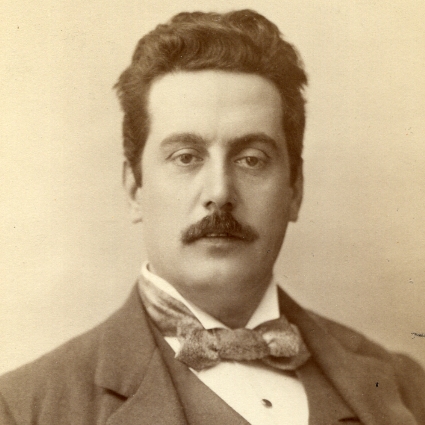
COMPOSER
Giacomo Puccini
Setting
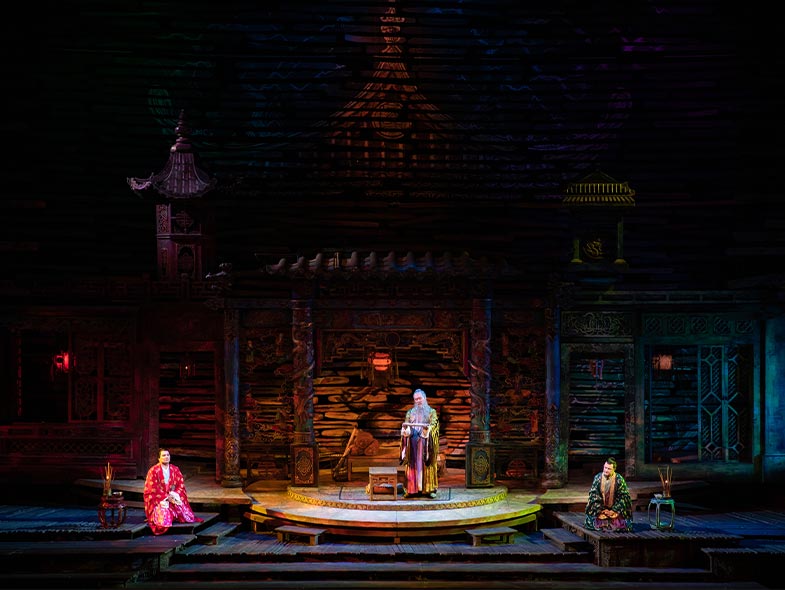
In Gozzi’s play, the original commedia dell’arte characters wandered from Italy to China and were members of the Imperial court. Their comments satirized Venetian politics and mores of the times. Puccini and his librettists dispensed with any such relevance. The China of this opera, set in “legendary times,” is a mythic realm viewed from the exoticizing perspective of 20th-century Europeans.
Music
The large Turandot orchestra calls for a wide variety of instruments, including alto saxophones, celesta, bass xylophone, harps, and an organ. There are several genuine Chinese themes that are integrated into the score in a suave and brilliantly original manner, including the big imperial anthem in Act II. The opera also contains moments of sheer melodic beauty in Puccini’s most lyrical vein, most notably in the tenor’s unforgettable song of triumph, “Nessun dorma,” which opens Act III.
